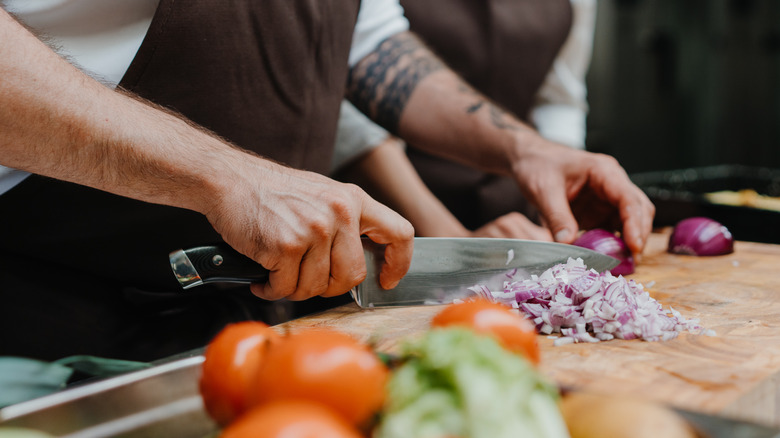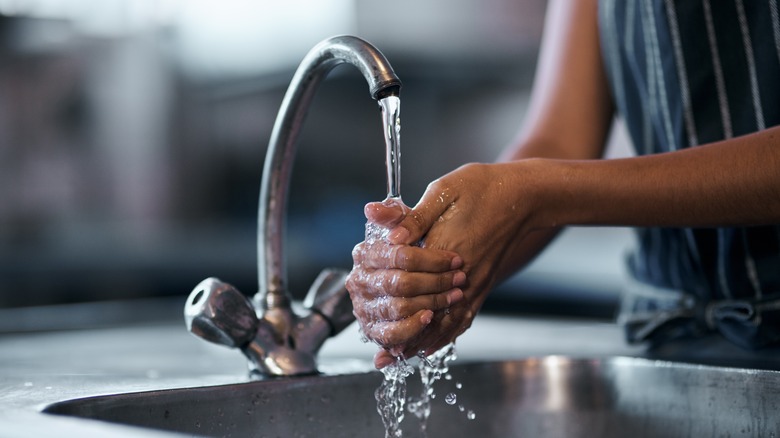Why Chefs Don't Wear Gloves When Making Food
The expectations of restaurants vary by patron. But at the very least, everyone wants to eat food prepared in a hygienic environment. While most know to always avoid restaurant lemons, there are disagreements on whether kitchen staff should prepare other food with gloved or bare hands. To clear things up, The Takeout spoke with Maricel Gentile, executive chef and owner of Maricel's Kitchen and author of "Maricel's Simply Asian Cookbook," to ask about the legalities and cleanliness of gloved versus ungloved hands. Maricel mentions that in most U.S. jurisdictions, it isn't required for kitchen staff who handle food to wear gloves unless handling raw meat or ready-to-eat meals. However, a part of proper diligence is checking local regulations.
"Gloves can give a false sense of security," Maricel told The Takeout. "If workers handle raw then ready-to-eat foods without changing gloves, they spread contamination faster than bare hands with frequent washing. Gloves also reduce tactile feedback, so it's easier to cut yourself or mishandle delicate foods. Sometimes clean, bare hands washed between tasks offer better precision and hygiene, teaching us that more protection is not always better protection."
A study published in the National Library of Medicine tested flour tortillas and found that from the samples of the food handled by kitchen staff wearing gloves, 9.6% had coliform bacteria while only 4.4% of samples from the ungloved kitchen staff contained coliform bacteria. Preventing foodborne pathogens is a top priority in the restaurant industry, but gloves may not be the perfect solution. (The best way to practice good restaurant hygiene is tied to a safety measure that restaurants often neglect the most.)
Kitchen hygiene practices to prevent the spread of bacteria
Whether gloves or bare hands are appropriate for the task, there are proper procedures for both which create the most sanitary space. "Best practice is to wash hands before new glove use," Gentile continued. "Change gloves when switching tasks or every 30 minutes and discard gloves after handling raw proteins or soiled surfaces. For bare-handed work, wash hands for at least 20 seconds with soap before prep, after breaks, after using the restroom, and between handling raw and ready-to-eat foods."
Several other ways for restaurant staff (or anyone preparing food) to help prevent foodborne illness include: not working when sick, being knowledgeable about good food handling, and refraining from touching ready-to-eat foods with bare hands. Kitchen tools can be used to minimize contact with food, including tongs, spoons, piping bags, and anything that replaces direct hand-to-food contact. Keeping a sanitary kitchen space is another way to prevent cross-contamination and the spread of foodborne illnesses. It's shocking what the most contaminated things in the kitchen are, but cleanliness is essential for both staff and the restaurant environment.

